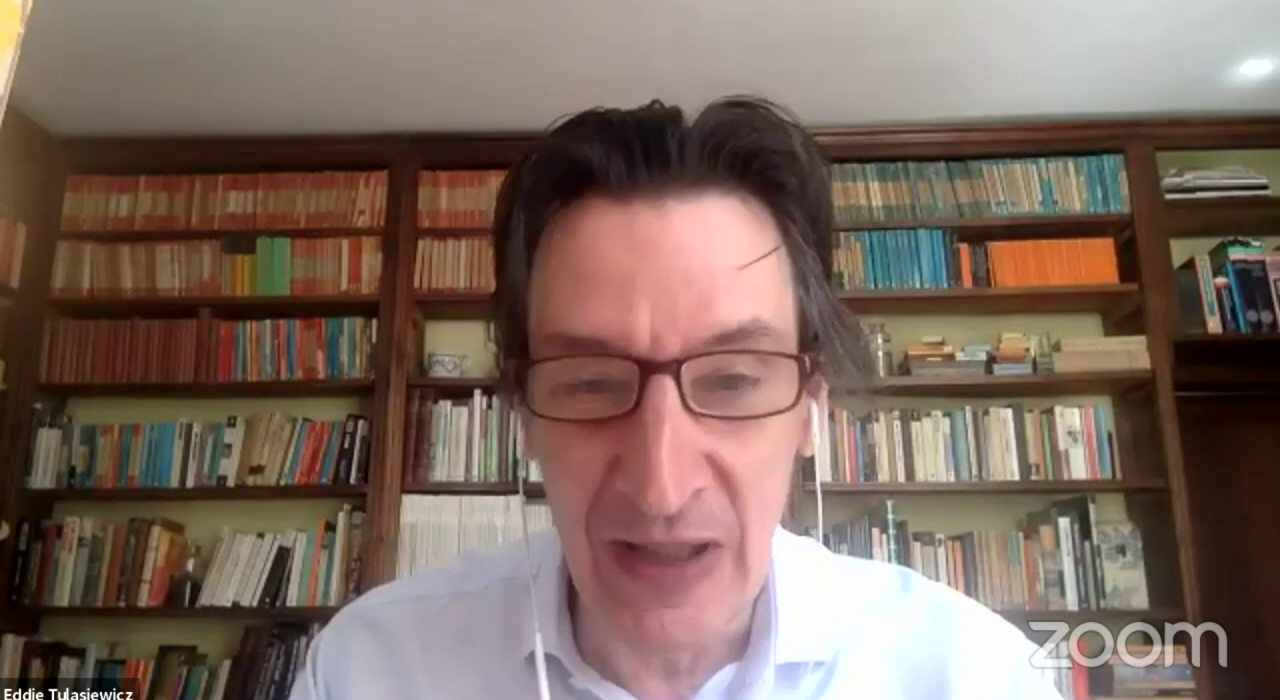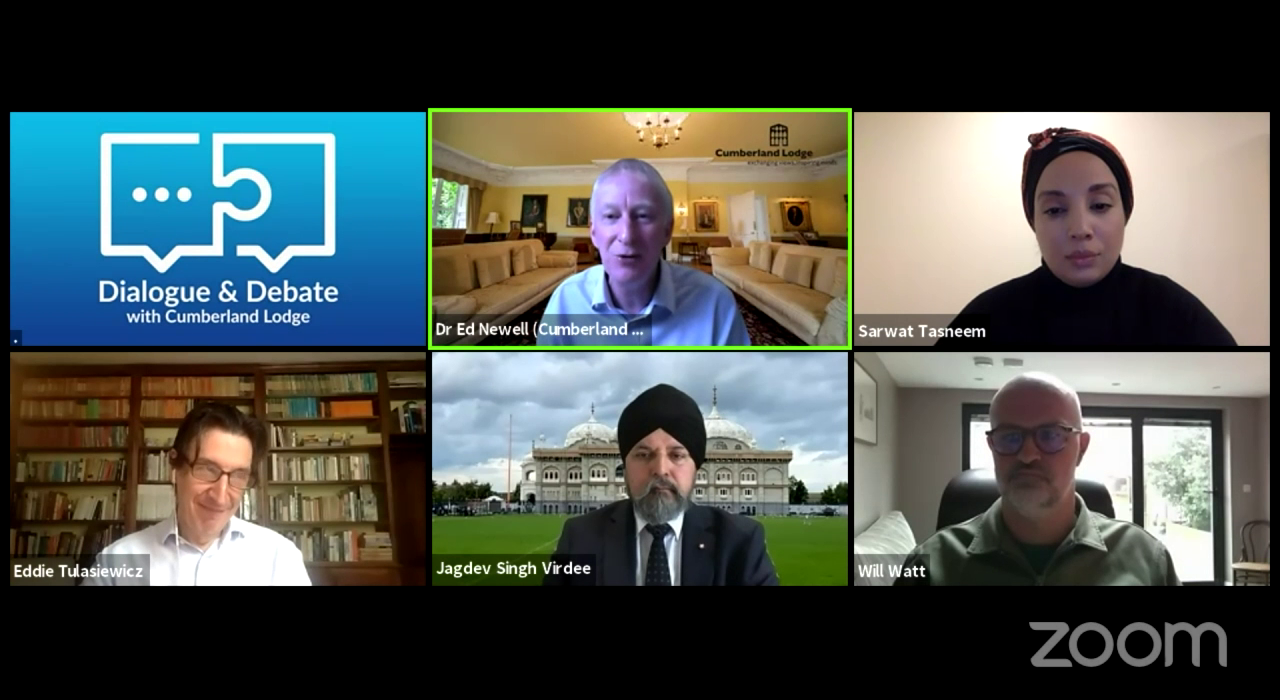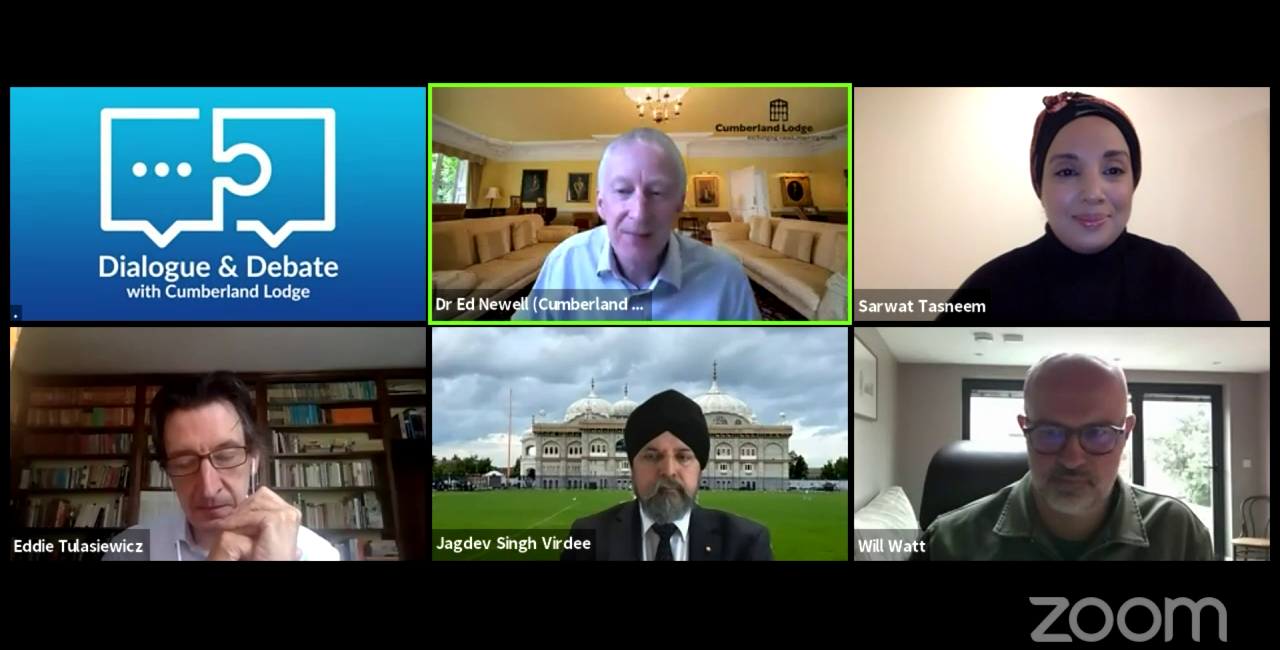On Wednesday 7 July 2021, Cumberland Lodge hosted an interactive Dialogue & Debate webinar on the changing role and potential for wider community use of churches and other religious buildings in the UK.
Four guest panellists joined host and Chief Executive, Dr Edmund Newell to consider how places of worship could adapt to better meet particular societal needs and foster social cohesion, in our increasingly multicultural, interfaith society.
The four guest speakers were:
- Sarwat Tasneem – Founder of 14-Consulting; Fellow of The Centre of Conscious Design
- Eddie Tulasiewicz – Head of Communications and Public Affairs, National Churches Trust
- Jagdev Singh Virdee – General Secretary of Guru Nanak Darbar Gurdwara, Gravesend; Editor of British Sikh Report
- Will Watt – Director of State of Life (author of The House of Good report for the National Churches Trust, 2021)
Ed began the webinar with a live poll, asking the audience to reflect on whether the pandemic had accelerated changes underway in the terms of how we use religious buildings, and how different places of worship are being used for wider social purposes as a result of COVID-19. The results were a 50-50 split, setting the scene for the discussion that followed.
The value of religious buildings
Beginning the debate, Eddie Tulasiewicz noted that, despite the shifting faith and belief landscape in the UK, churches continue to play a central role in the lives of many individuals. He estimated that approximately three million people use churches on a regular basis to attend services, visit for tourism purposes or access community support services.

Will Watt, drawing on his research for The House of Good report, highlighted the often overlooked market and non-market value of religious buildings, particularly as an invaluable source of volunteers and a location for community service provision. Places of worship are often also hubs for mental health, drug and alcohol support groups, food banks and youth programmes, for example. He argued that such sites are of immeasurable value, as, in his words, ‘they are stepping in where the state is failing to provide.’
Jagdev Singh Virdee further demonstrated the value and broader community use of religious buildings in the UK by providing examples from the Guru Nanak Barbar Gurdwara in Gravesend, Kent. This recently constructed, purpose-built Gurdwara supports the local community in a variety of ways, through its sports and educational facilities, by serving as a day centre for older people and, during the pandemic, by creating and distributing food parcels to people who are vulnerable and shielding or self-isolating.

Spaces of social cohesion
A key theme throughout the webinar was the role that religious buildings can play in supporting social cohesion. Sarwat Tasneem discussed the importance of mosques, for example, in providing a sense of the familiar and practical support for Muslim immigrants and refugees and, in inner-city areas, in providing guidance and direction for the growing young Muslim demographic. She stressed, however, that places of worship should not be exclusive spaces for one religious group but that events held within such buildings should be inclusive of the whole community.
Sarwat offered the example of The House of One, a multi-faith religious building in Berlin, for vividly demonstrating the possibilities for creating greater understanding and dialogue between people of different faiths. This unique place of worship brings a church, synagogue and mosque together, under one roof, with a communal room at the centre in which worshippers and members of the public can learn more about the three religions and about one another.
Eddie spoke of the multifaith chaplaincies already in existence at Canary Wharf, London, and in UK hospitals and airports, as well as in airports around the world, but he highlighted that inconsistent Government funding was a stumbling block, preventing the adaptation of religious buildings for wider community use.
Jagdev underscored the educational role of religious buildings in promoting a greater understanding of religion and the cultural and religious practises of particular faiths. He also argued that religious leaders should strive to create a heightened awareness within their local communities that people of all faiths or non are welcome in religious buildings. This could generate greater footfall and increase community usage of certain under-utilised places of worship.

Volunteers or the state
Linked to issues of funding and maintenance, another area of debate brought to light by this discussion were the roles of volunteers and the state in supporting religious buildings.
Jagdev asserted that it is vital to keep volunteers motivated through involvement in pertinent community support projects. For example, in December 2020, volunteers at Guru Nanak Barbar Gurdwara came together to provide hundreds of meals for lorry drivers who were stranded in Dover due to the closure of French borders during the pandemic. This action generated publicity for the Gurdwara, which in turn encouraged more volunteers to offer their services to support the local community. As Jagdev argued, people are more likely to volunteer if they are made aware of the outcomes of particular projects and the good being achieved.
Echoing this point, Sarwat said it was crucial to communicate the opportunities that are available for the wider community, and that once people were engaged and informed, they would be more likely to provide financial support that is crucial for the maintenance of facilities at mosques and other religious buildings. She also suggested a long list of ideas for revitalising under-utilised buildings – they could be leased to various organisations, for example, converted into affordable residential housing, or used as safe recreational spaces.

In response to an audience question about whether maintenance of religious buildings should be outsourced rather than relying on volunteers, Eddie stated that churches are community assets, there for the whole community. He argued that local authorities should seize the opportunity provided by under-used church buildings, to house services that have been forced to close down in the local community, such as post offices, village shops or libraries, and draw on volunteers from the church community to run them.
Will stated that, as many religious buildings in the UK are already successfully providing multi-use services, there is a significant case for strategic investment from central or local government. He argued it is unbelievable that religious buildings are being ‘left to crumble’, with congregations having to prop them up, when they provide such invaluable community services, particularly in light of pressing mental health, loneliness and social care agendas.

Sharing religious spaces
Eddie concluded his input by discussing how different religions, such as Islam and Sikhism, and newer Christian communities, are beginning to take over disused church buildings, especially in inner city areas in the UK. He also mentioned how unwanted church equipment in rural churches, such as organs, are increasingly being bought by new Christian communities and put to good use in different places of worship.
One World House: A vision for the future
Reflecting on the webinar, it seems clear to me that the state needs to provide more funding to religious buildings in the UK, in recognition of the immeasurable value they, and their volunteers, generate in terms of community service. Yet, more than this, to secure the future of religious buildings in the UK as part of our built heritage, we need to look to the example of the House of One and invest more in multi-faith spaces. This unique project in Berlin can serve as a way to generate greater understanding and cohesion between Christians, Muslims and Jews.
As Martin Luther King once wrote, ‘We have inherited a large house, a great world house’, and despite our differences we ‘must learn somehow to live with each other in peace.’ In a world marred by conflict and suspicion, the House of One stands out, to me, as a symbol of peaceful dialogue and coexistence and an idea that I believe the UK should seek to replicate.


